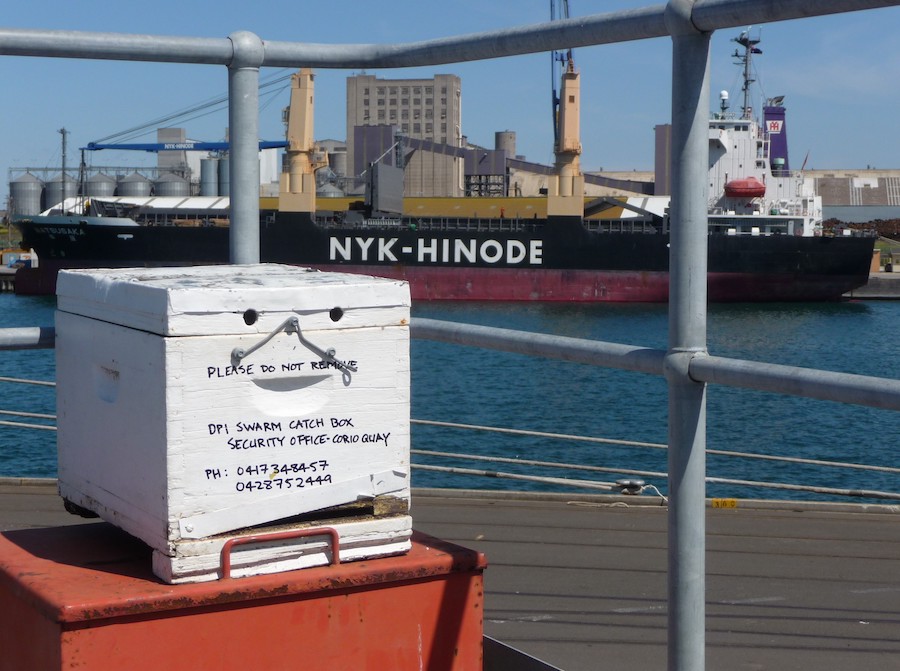The National Bee Pest Surveillance Program (NBPSP) is an early warning system to detect new incursions of exotic bee pests and pest bees. The program uses a range of surveillance methods conducted at sea and airports throughout Australia considered to be the most likely entry points for bee pests and pest bees. Early detection significantly increases the possibility of eradicating incursions and limits the scale and cost of eradication programs.
Grain Producers Australia (GPA) chair and Western Australian grain producer Barry Large says the surveillance program is important to ensure the health and wellbeing of European honey bees and the honey bee and pollination service industry.
“Supporting the NBPSP with grower levy contributions is one of the many ways GPA works with Plant Health Australia to deliver stronger biosecurity protections for Australian grain producers and shared benefits for other plant-based industries,” Mr Large says.
Pollination services support the grains industry in hybrid seed production, allowing growers to capture more of the benefits of hybrid vigour. Hybrid seed in crops such as canola is produced by controlled pollination between two parent lines.
Research in Australia and Canada has found that in addition to hybrid vigour, this form of seed production also allows breeders to combine certain traits, such as herbicide tolerance and disease resistance, more easily and from two parental sources rather than just the one.
Importance of pollination
Given the wide-ranging benefits of European honey bees, their value to the Australian economy – as both managed hives and unmanaged (feral) colonies – has been difficult to estimate, but in 2018-19 the value of pollination was believed to be in the order of $14.2 billion.
To protect these benefits, Australia holds the enviable status of being free from many significant pests and diseases of honey bees that pose a major threat to bee populations worldwide. Overseas, pests such as varroa mite have contributed to honey bee colony collapse, significantly increasing the cost and decreasing the availability of pollination services.
The NBPSP provides the best chance of detecting bee pests early, assisting in containment and eradication, as shown in the recent varroa detection and response being implemented in New South Wales.
A key activity that assists Australia to maintain freedom from this range of pests and diseases is surveillance in areas considered to be of highest risk for the entry and establishment of exotic bee pests, including 21 sea and airports around the country.

Catchboxes are set up at ports to capture swarms that may arrive on vessels and cargo. Photo: Plant Health Australia
Nine exotic pests have been identified as targets for the NBPSP that could pose a significant threat to pollination services, including varroa mites, Tropilaelaps sp. mite, tracheal mite and Asian bees such as Apis dorsata and Apis florea.
The NBPSP utilises various surveillance techniques and timing at port locations, dependent on target pests. These techniques include the deployment of sentinel hives, swarm and nest capture at ports, installation of catchboxes and floral sweep netting.
The use of sentinel hives of European honey bee plays a vital role in the program. Sentinel hives remain deployed across high-risk ports in the major grain producing states, such as those stretching across the southern regions of Australia from Fremantle in Western Australia to Port Botany in NSW, and up into Queensland. Dedicated apiary officers in each of the regions regularly inspect these strategically placed hives for the early detection of exotic mites.
Swarms and nests are also routinely found around port environments. Once captured, bees from swarms and nests are examined to determine if they are exotic bee species and are carrying any exotic pests and pest bees, which may have entered on an incoming vessel.
New swarms of European honey bee that may have inadvertently arrived on cargo vessels may also be picked up using catchboxes, which are empty hives that are assessed to check if swarms of honey bees have set up residence.
The NBPSP is funded by Hort Innovation using research and development levies of horticultural industries, with significant co-investment from states and territories and contributions from the Australian Honey Bee Industry Council, GPA and the Australian Government. The NBPSP is coordinated by Plant Health Australia and delivered by states and territories.
More information:

























































